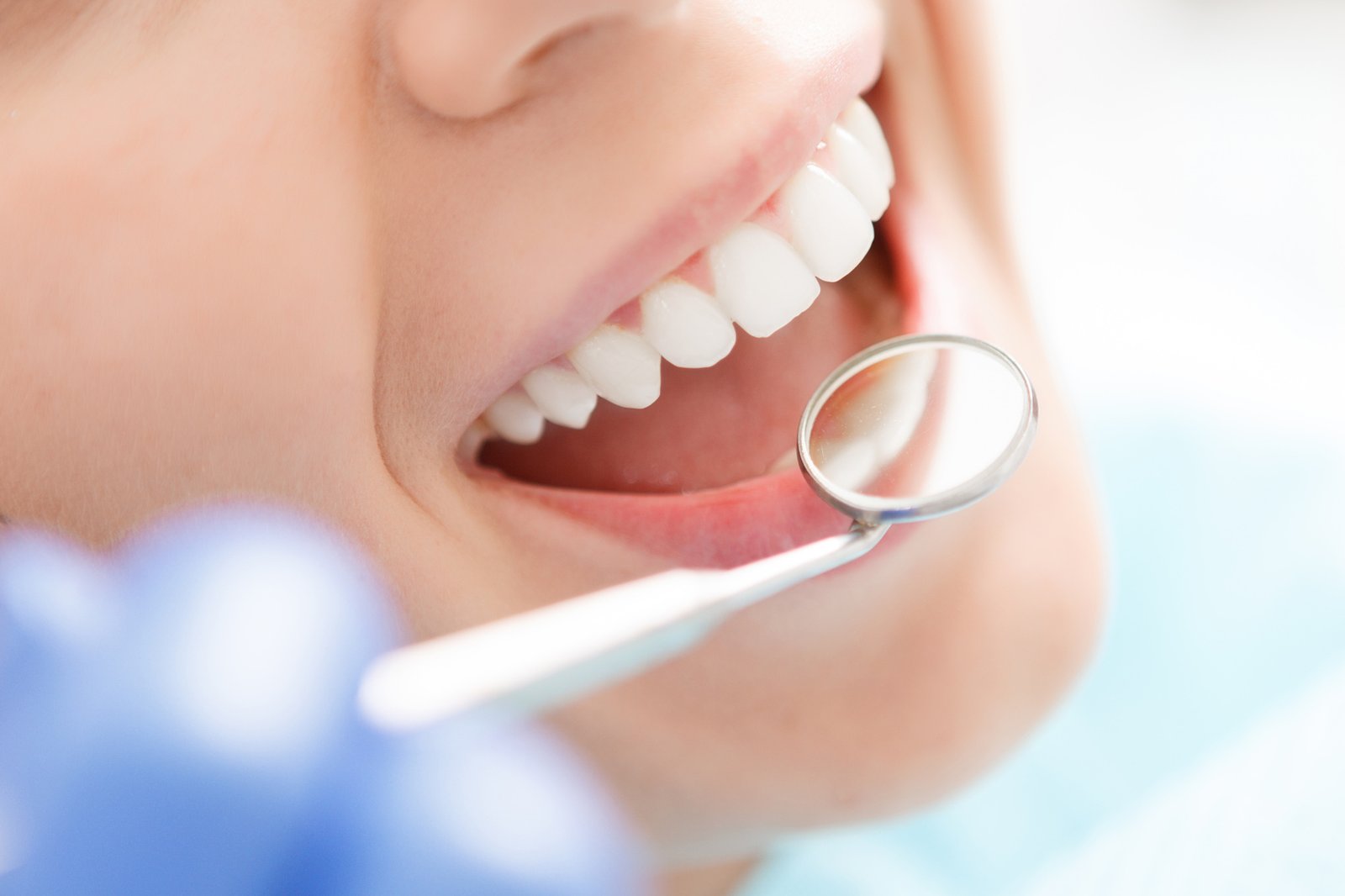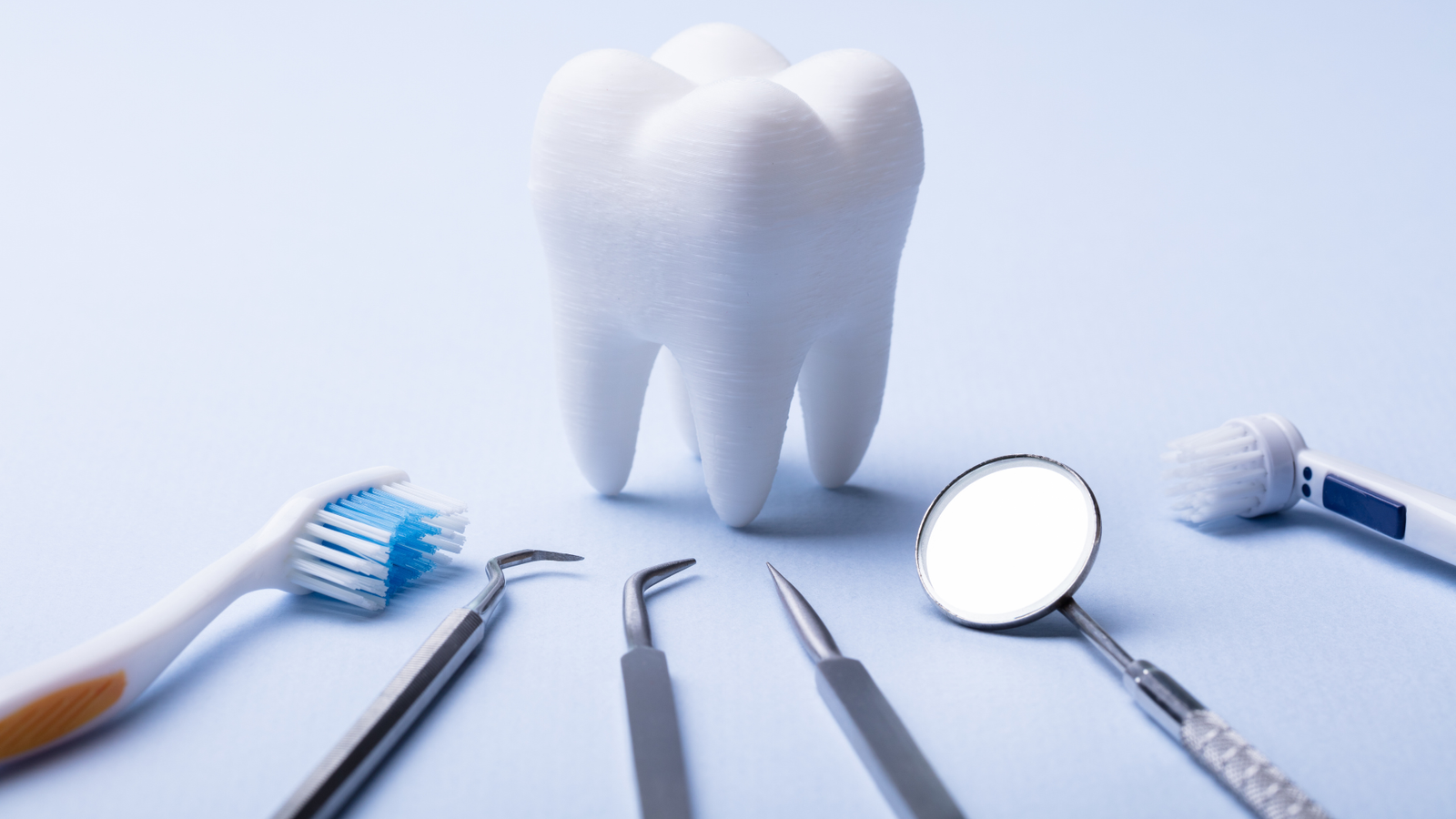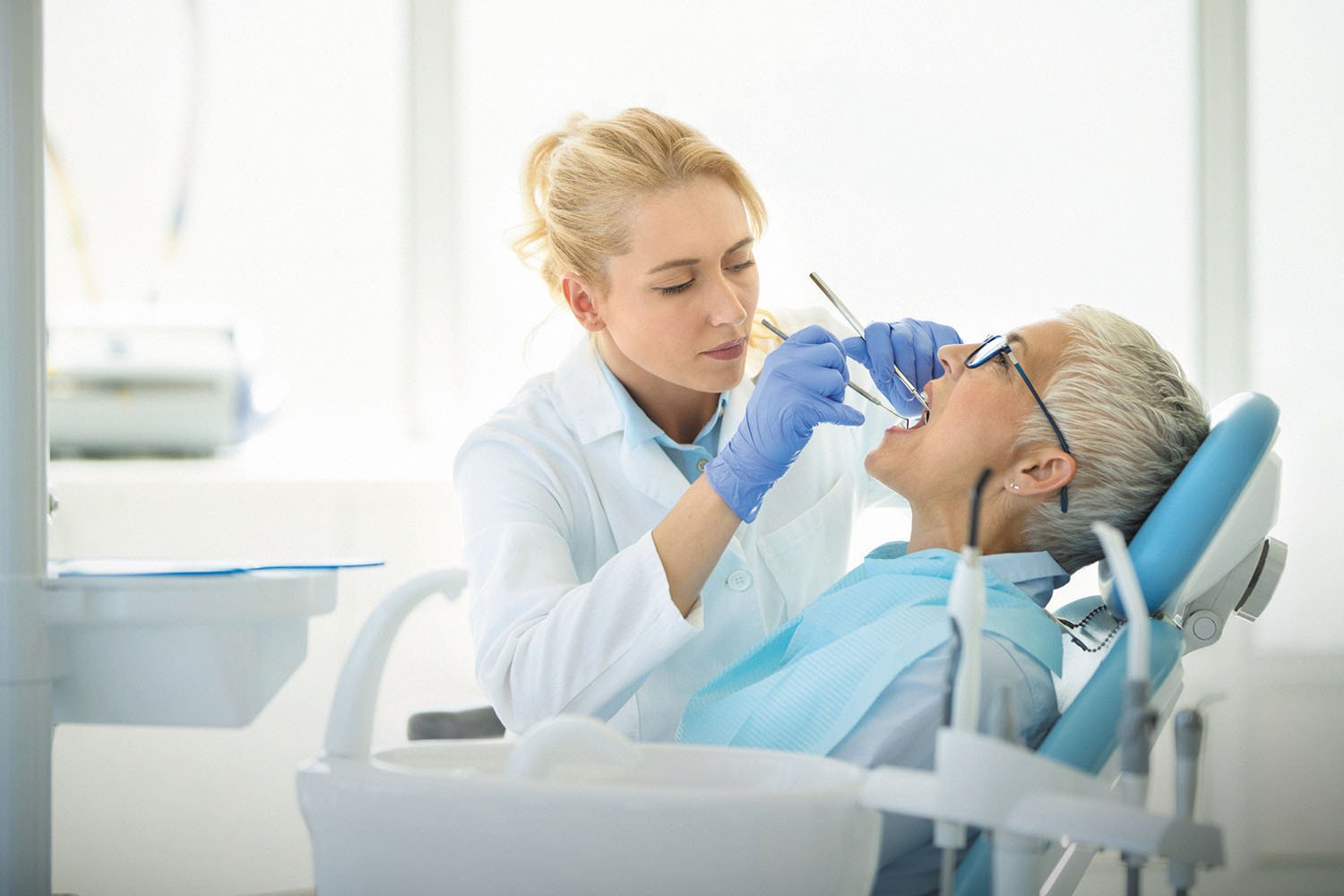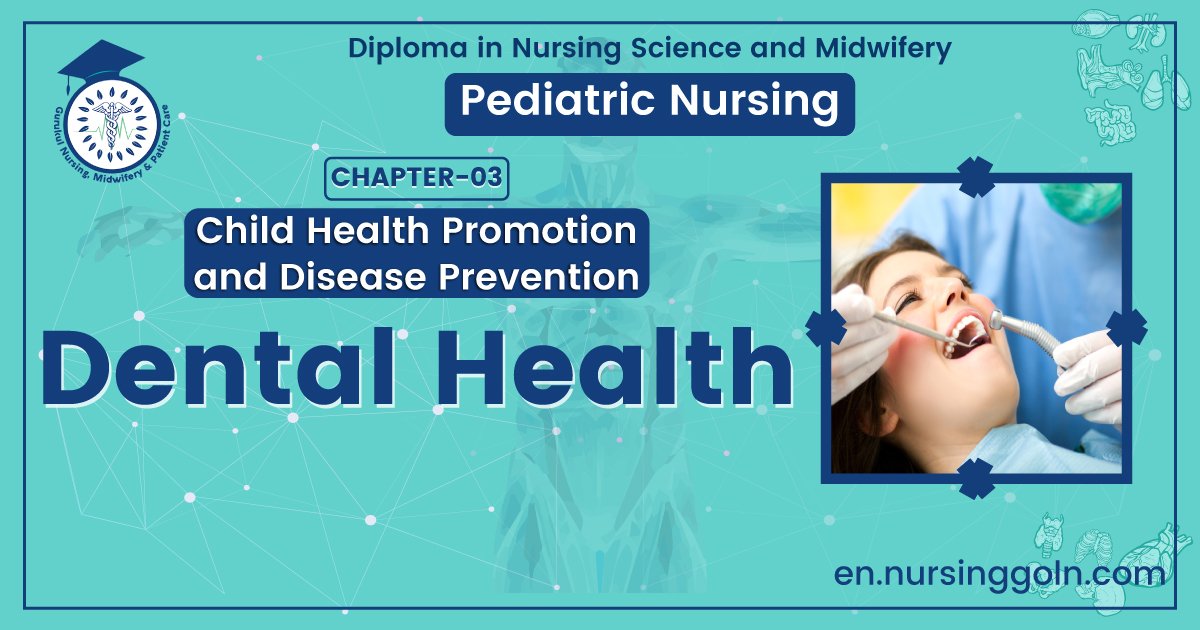Dental health – Health of the children has been considered as the vital importance to all societies because children are the basic resource for the future of humankind. Nursing care of children is concerned for both the health of the children and for the illnesses that affect their growth and development. The increasing complexity of medical and nursing science has created a need for special area of child care, i.e. pediatric nursing.
Pediatric nursing is the specialized area of nursing practice concerning the care of children during wellness and illness. It includes preventive, promotive, curative and rehabilitative care of children. It emphasizes on all round development of body, mind and spirit of the growing individual. Thus, pediatric nursing involves in giving assistance, care and support to the growing and developing children to achieve their individual potential for functioning with fullest capacity.
Dental health

Definition of Dental Health:
According to WHO “Oral health is a state of being free from chronic mouth and facial pain, oral and throat cancer, oral sores, birth defects such as cleft lip and palate, periodontal (gum) disease, tooth decay and tooth loss, and other diseases and disorders that affect the oral cavity”.
Purposes of Maintaining Dental Health:
- To maintain socially acceptable & healthy life
- To prevent any kind of oral infection
- To keep the teeth healthy
- To protect the mouth from any kind of disease.
(Ref by- http://www.who.int)
Common Dental Problems in Bangladesh:
- Dental caries
- Discolor teeth
- Delayed eruption of teeth
- Calculus
- Sensitive teeth
- Bad breath
- Periodontitis
- Gingivitis
- Malocclusion of teeth
- Dental-fluorosis
Dental Caries
Dental caries is the scientific term for tooth decay or cavities. It is caused by specific types of bacteria. They produce acid that destroys the tooth’s enamel and the layer under it, the dentin.

Many different types of bacteria normally live in the human mouth. They build up on the teeth in a sticky film called plaque. This plaque also contains saliva, bits of food and other natural substances. It forms most easily in certain places. These include:
- Cracks, pits or grooves in the back teeth
- Between teeth
- Around dental fillings or bridgework
- Near the gum line
Definition of Dental caries:
Dental caries is a progressive and destructive process causing decalcification of the tooth enamel, destruction of dentin and cavitation of the teeth. It can spread into the tooth pulp and may cause inflammation and abscess.
(Ref: Paediatrie Nursing, Parul Datta/3rd/419)
Factors Responsible For Dental Caries:
Many microorganisms can cause dental caries. Streptococci is the main cariogenic organism which produces an extracellular polysaccharide and forms a plaque over the teeth. Gradually tooth decay begins following demineralization of enamel.
Destruction of dentin with cavity formation occurs causing inflammation and abscess formation.
Biting surface and contact surfaces between teeth are most common site of caries.

The factors arc-
- Carbohydrate rich foods, especially chocolate which stick to the teeth and poor oral hygiene with inadequate dental-dare.
- Sleeping with feeding bottle in mouth.
- Use of dummy or pacifiers with honey or some other sweetening agents are also responsible factors of dental caries.
- Long time retention of carbohydrate foods in the mouth is more important as cariogenic factors.
- Faulty salivary gland functions also considered as risk factors of dental caries.
- Deficiency and excess of fluoride are both harmful.
(Ref: Paediatric Nursing, Parul Datta/3rd/419)
Clinical Features of Dental Caries:
- Dental caries is found as pits and fissures of biting surfaces of teeth, commonly in molars as initial features.
- Cavity formation
- Involvement of pulp
- Periapical abscess
- Dental abscess or sepsis may develop.
- Dental caries may spread to involve the pulp and contagious tissue which is manifested with significant tooth ache. Pulpitis may be complicated with dental or periapical abscess which is very painful.
(Ref: Paediatric Nursing, Parul Datta/34/420)
Management of Dental Caries:
- Dental caries should be treated with analgesics to relief pain and tooth extraction or pulpectomy.
- Involvement of tissue outside the dentoalveolar unit requires antibiotics mainly in infection of submandibular space, periorbital space and facial triangle.
- Oral antibiotics are not effective, parenteral administration should be given to prevent complication.
(Ref: Paediatric Nursing, Parul Datta/34/420)
Prevention of Dental Caries:
- Dietary modification by reducing carbohydrate-rich food intake and avoiding oral retaining.
- Use of fluoride toothpaste.
- Avoidance of chewing gum, chocolates, bottle feeding, use of pacifiers, etc.
- Good oral and dental hygiene with correct technique of tooth brushing.
- Dental sealants and plastics to be applied to seal the pits and fissures on occlusal surfaces of teeth.
- Mechanical removal of plaque and debris of the teeth are essential.
- Regular dental check-up for early detection of problems and necessary advice. stak
(Ref: Paediatric Nursing, Parul Datta/34/420)
Dental Fluorosis
Definition of Dental Fluorosis:
Dental fluorosis usually develops due to high concentration of fluorine in drinking water supply or high content of fluoride in tooth paste. A mottled discoloration of teeth enamel is found due to this fluorosis as white flecking or linear opacity of enamel. In chronic cases, the condition may be complicated with osteosclerosis, osteomalacia and involvement of vertebral column and spinal cord with paraplegia.
(Ref: Paediatric Nursing, Parul Datta/3rd/420)
Delayed Eruption Of Teeth
Possible Causes of Delayed Eruption of Teeth:
- Familial or racial tendency
- Poor nutrition
- Rickets
- Hypothyroidism
- Hypopituitarism
- Osteogenesis imperfect etc.
(Ref: Paediatric Nursing, Parul Datta/3rd/419
Malocclusion of Teeth
Definition of Malocclusion of Teeth:
Dental malocclusion is the malposition and faulty contact of the mandibular and maxillary teeth due to improper relationship between upper and lower dental arches.
Results of Malocclusion:
- Incorrect mastication.
- Cosmetic disfigurement of face and
- Early loss of teeth.

Causes of Malocclusion:
- Genetic factors
- Thumb sucking
- Tongue thrusting habits
- Dental injuries and
- Teeth extraction
(Ref: Paediatric Nursing, Parul Datta/3rd/419)
Read more:
